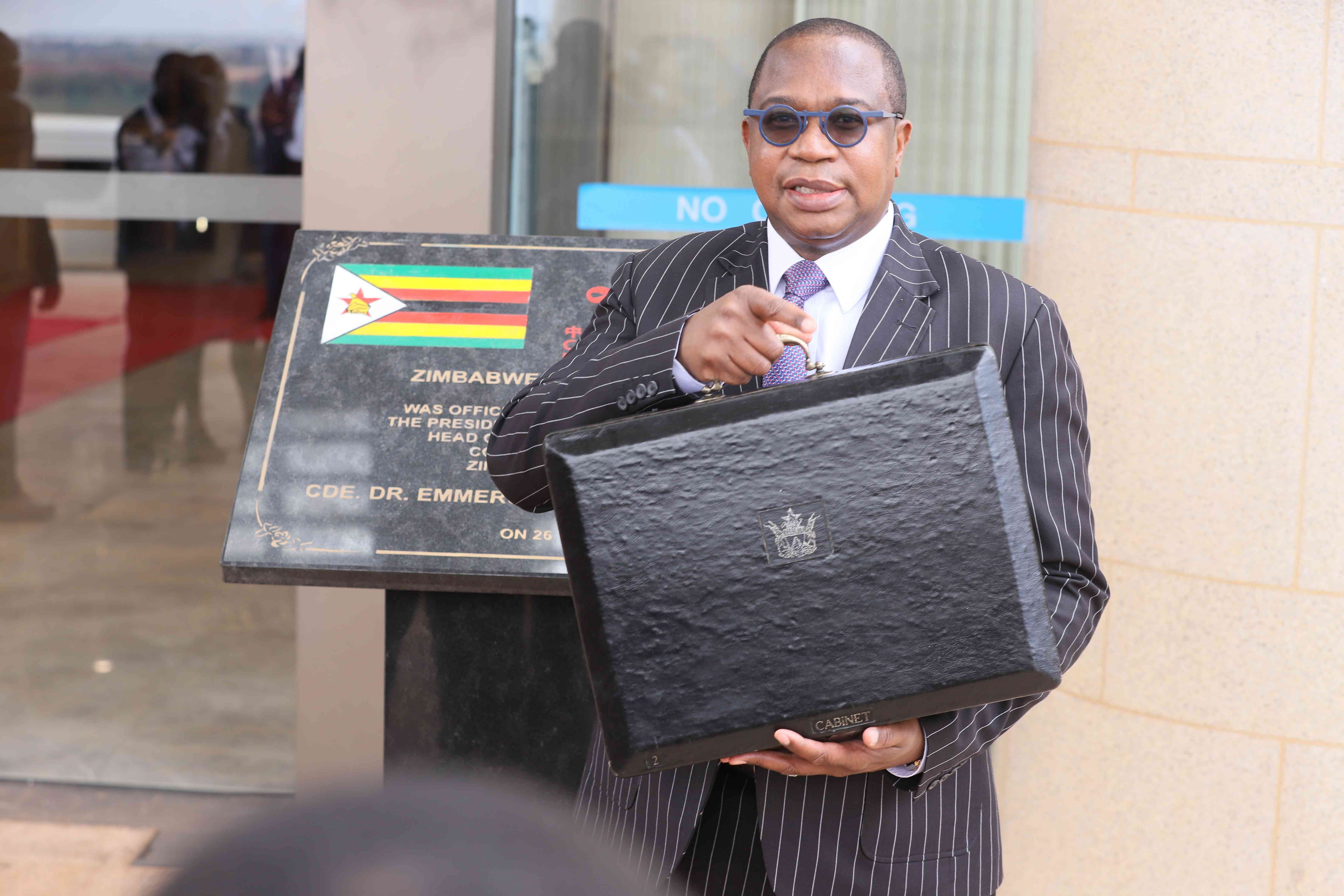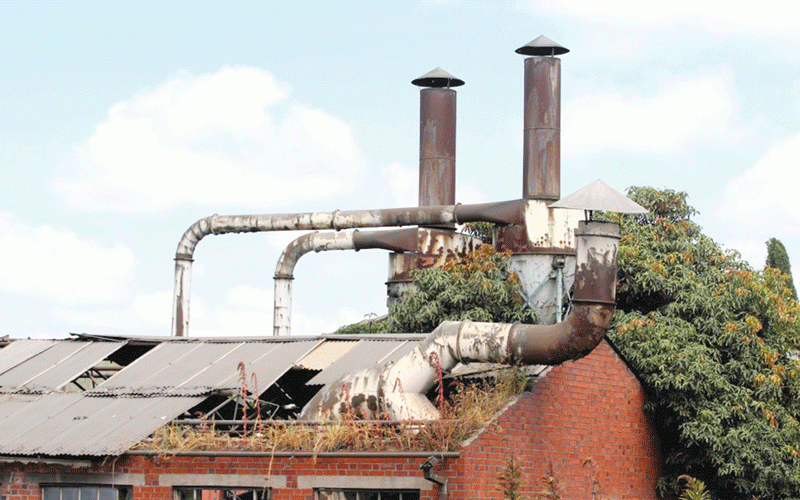
ZIMBABWE’S economic fortunes are braided with politics, policy and people. There are five pivotal issues necessary for Zimbabwe to move toward a more inclusive, diversified and resilient economy that broadens opportunity, raises living standards and strengthens its role in regional markets.
These axes, each exerting distinct pressures and opportunities are:
Economic reforms and dollarisation consolidation,
Agriculture revival and land reform governance,
Infrastructure upgrades (energy, transport, ICT),
Inflation control and monetary policy prudence and
Foreign investment and regional integration.
Together, they shape a trajectory that has the potential of lifting the economy from cycles of stagnation toward steadier growth, while also presenting vulnerabilities that require vigilant governance, inclusive policymaking and credible institutions.
- Mavhunga puts DeMbare into Chibuku quarterfinals
- Bulls to charge into Zimbabwe gold stocks
- Ndiraya concerned as goals dry up
- Tarakinyu, Mhandu triumph at Victoria Falls marathon
Keep Reading
This instalment examines each point in depth, with concrete examples and their implications for Zimbabwe’s future.
Economic reforms, dollarisation
Zimbabwe’s economic reforms over the past decade have been a balancing act between stabilising macroeconomic conditions and pursuing structural changes that yield longer-run productivity gains.
A central component has been the consolidation of macro-economic stability, often framed through a managed currency regime and prudent fiscal policy. The stabilisation logic rests on breaking the era of hyperinflation and extreme exchange-rate volatility that historically undermined consumer confidence, savings and investment.
In practice, this has involved measures such as tighter monetary aggregates, a credible inflation target framework and an emphasis on restoring the integrity of public finances.
Concrete implications of consolidation include a firmer anchor for prices, which reduces the risk premia on loans and lowers the cost of credit for productive sectors.
When inflation expectations are anchored, lending standards improve and businesses are able to plan for capital expenditure with greater certainty. For example, in economies that have stabilised, industries such as manufacturing and agro-processing gain from predictable input costs and stable import prices for machinery and raw materials.
In Zimbabwe’s context, dollarisation consolidation has enabled exporters to price competitively in foreign markets while reducing the internal erosion of profits caused by currency depreciation.
However, consolidation is not risk-free. It often constrains fiscal space if revenue collection struggles or if subsidies and social spending are reined in too aggressively. Political economy dynamics matter: reform agendas may stall if a broad coalition of interest groups feels harmed by tightening measures, inconsistent signalling, or perceived inequities in redistribution.
The risk of policy missteps - such as abrupt exchange-rate shifts, sudden subsidy removal, or inconsistent currency rules, could provoke volatility, erode confidence and provoke capital flight.
Therefore, credibility, consistency and gradualism are critical. A path forward would emphasise transparent budgeting, clear inflation targets, independent monetary oversight and a social safety net that cushions transition costs for vulnerable households.
A specific example of progress in this area is the adoption of credible monetary frameworks that separate monetary policy from fiscal discretion, enabling the Reserve Bank of Zimbabwe to target inflation while the treasury focuses on debt sustainability and growth-enhancing expenditure.
The consolidation also benefits from continued cooperation with international financial institutions and regional partners, which could provide technical assistance, policy guidance and, where possible, concessional financing.
In sum, effective reforms and dollarisation consolidation could unlock investment, reduce borrowing costs and stabilise consumer expectations, provided they are paired with predictable policy signalling and inclusive governance.
Agriculture revival
Agriculture remains the backbone of Zimbabwe’s economy, employing a sizable share of the population and contributing meaningfully to export earnings through crops such as tobacco, horticulture and grains.
The revival of agriculture hinges on governance that translates policy intentions into tangible, on-the-ground improvements: access to productive land, reliable water infrastructure, affordable inputs, robust extension services and resilient value chains from farm to market.
A key dimension is land reform governance. Land tenure certainty underpins farmer confidence; without secure titles and transparent allocation processes, investment in soil health, irrigation, inputs and mechanisation stagnates.
The revival narrative ought to centre on the revival of viable, productive farms through corporate and cooperative models, alongside targeted support for smallholder farmers.
When governance is sound, the agricultural sector experiences spill over into related industries such as seed, fertiliser, machinery, trucking, storage and agro-processing, essentially creating employment and anchoring markets for rural incomes.
Concrete examples include the potential expansion of irrigation infrastructure in arid regions, which would reduce rainfall risk and enable multiple cropping cycles. In Zimbabwe’s Zambezi and Limpopo basins, rehabilitating existing canal networks and investing in pump stations could unlock significant yields in maize, sorghum and vegetables, even in drought years.
A revived export-oriented tobacco segment, coupled with value-added products like cured-tobacco and tobacco-related by-products, could generate foreign exchange and diversify export earnings.
Furthermore, improved agronomic extension services, access to credit on favourable terms for inputs and the adoption of climate-smart practices, utilising AI tools, would bolster resilience to climate variability and enhance productivity per hectare.
However, the risks are substantial. Governance gaps, i.e., corruption, leakage in input subsidies and inequitable land distribution, could undermine confidence and deter investment.
Infrastructure bottlenecks, including inconsistent electricity supply, energy poverty in some areas, weak cold-chain facilities and insufficient storage, restrict market participation and raise post-harvest losses.
A successful agriculture revival, therefore, requires integrated policy design: land reform processes that are transparent and rights-based; reliable water and irrigation services; accessible credit facilities with collateral requirements aligned to smallholders; extension and knowledge transfer; and robust market access, including export channels and domestic procurement policies that stabilise farm-gate prices.
If managed well, agriculture could anchor growth, create inclusive opportunities and reduce food import dependence.
Infrastructure upgrades
Infrastructure is the backbone of modern economies. Zimbabwe’s development trajectory benefits greatly from upgrades in energy, transport and information and communications technology (ICT).
The energy sector, historically hampered by frequent power outages and rising generation costs, is pivotal for industrial productivity and household welfare. Upgrades in power generation capacity, transmission reliability and grid maintenance reduce production stoppages, support new industrial parks and improve the reliability of service delivery in urban and rural areas.
Renewable energy projects, including solar and hydro, offer potential diversification of the energy mix, price stabilisation and reduced exposure to fossil-fuel price shocks.
Importantly, energy resilience also influences social indicators such as healthcare and education outcomes, which depend on dependable electricity for clinics, schools and water systems.
In transport, rehabilitating roads, railways and logistics corridors lowers freight costs, reduces travel times and improves access to markets. The development of ports and inland logistics hubs, enhances regional trade connectivity, aligning Zimbabwe more closely with regional value chains in Southern African Development Community.
A credible transport upgrade programme could reduce the cost of moving agricultural outputs to urban centres and export destinations, stimulating manufacturing and agri-processing activities.
ICT infrastructure characterised by broadband expansion, mobile networks and digital services certainly drives productivity through improved information flows, e-commerce, fintech and innovation ecosystems.
A robust digital backbone enables smallholders to access price information, credit and training, while SMEs could adopt digital tools to optimise operations. The recent launch of the National AI Strategy was a welcome development.
The social and economic dividends of ICT investment include improved financial inclusion through mobile money platforms and better delivery of public services through e-government initiatives.
Concrete challenges still persist, though. Financing large-scale infrastructure requires credible public investment management, transparent procurement and risk management to avoid cost overruns.
Public-private partnerships (PPPs) could mobilise private capital, but require clear regulatory frameworks, strong governance and tariff or concession models that balance investor returns with affordability for users. Maintenance is another critical dimension; infrastructure without ongoing maintenance contracts and technical capacity will deteriorate, eroding the value of initial investments.
A successful programme hinges on stable policy environments, predictable funding pipelines and a focus on ensuring that upgrades translate into broad-based improvements for organisations and households, not only headline project completions.
Inflation control, monetary policy
Inflation has historically destabilised Zimbabwe’s economy, eroding purchasing power, distorting investment decisions and undermining social cohesion. A central objective of monetary policy is to maintain price stability while supporting growth.
Achieving this balance requires prudent inflation targeting, credible fiscal discipline and an institutional framework that can withstand shocks. Inflation control is intrinsically linked to expectations: if households and companies believe prices will remain stable, they engage in longer-term planning, invest more confidently and wage settlements become more predictable.
Policy instruments include interest rate signalling, reserve requirements and open-market operations, coordinated with a credible fiscal framework to ensure that monetary expansion does not crowd out private sector lending.
Inflation-targeting regimes, when paired with transparent communication and independent monetary authority accountability, could anchor expectations and dampen speculative dynamics.
In addition, exchange-rate management, when needed, should be predictable, avoiding abrupt devaluations that reverberate through imported goods prices and debt servicing costs.
In practice, a successful inflation control regime supports real wages and household consumption by preserving purchasing power. It fosters a conducive environment for investment in human capital, industries with import substitution potential and export-oriented sectors by stabilising input costs and competitive pricing.
Nevertheless, this is a delicate endeavour. If inflation pressures emerge from structural supply constraints, such as energy shortages or agricultural bottlenecks, monetary policy alone cannot solve the problem because supply-side reforms become essential. Coordination with fiscal policy and structural reforms is, therefore, critical.
The overall implication is straightforward: credible, prudent inflation management builds confidence, lowers risk premia and promotes sustainable growth, but it must be part of a broader strategy that addresses supply constraints and investment climate.
Foreign investment
Foreign direct investment (FDI) and regional integration are pivotal to Zimbabwe’s economic ascent. Attracting capital enables technology transfer, productivity enhancement and networked access to regional markets through Sadc and beyond.
The implications are twofold: capital inflows can catalyse domestic capacity expansion and job creation, while regional integration expands export opportunities and enhances the country’s bargaining power in global trade.
A well-calibrated investment climate is critical. Clear property rights, predictable regulations, transparent procurement processes and robust governance reduce the risk premium for investors. Sectoral opportunities include agriculture value chains, mining beneficiation (where applicable), agro-processing, energy projects (including renewables), and telecommunications.
The region’s integrated markets also offer Zimbabwe access to larger regional supply chains, potentially stabilising demand for its exports and providing more diverse sources of inputs.
Case examples from regional peers illustrate the potential. Countries that have pursued stable macro policies, strengthened governance and targeted sector support have seen higher FDI inflows and improved growth trajectories.
For Zimbabwe, regional integration could be leveraged through participation in transit corridors, preferential trade arrangements and standardised customs procedures. Initiatives such as regional power pooling, cross-border infrastructure projects and harmonised investment regimes could reduce transaction costs and unlock bigger projects.
Yet, investment and integration face governance and policy risks. Corruption, policy reversals and weak rule of law often deter long-term commitments from investors. Currency risk, supply chain uncertainties and regulatory instability undermine confidence.
Therefore, a credible, consistent policy environment, that is consistent with the rule of law and anti-corruption measures, remains essential. Active promotion of sectors with comparative advantage, targeted incentives for high-impact investments and transparent renegotiation mechanisms for concessions could foster durable partnerships with foreign capital and regional collaborators.
Conclusion
Zimbabwe’s economic outlook, driven by the five axes of reform, agriculture governance, infrastructure investment, inflation prudence and foreign investment/regional integration, is contingent on coherent policy design, credible institutions and inclusive governance.
The potential rewards are substantial: macro stability that attracts investment, a revived agricultural base that sustains livelihoods, upgraded infrastructure that lowers production costs and accelerates trade, disciplined monetary management that preserves purchasing power and a welcoming environment for foreign capital and regional commerce.
But the path is not without challenges. Governance gaps, social inequality, climate variability and external shocks require resilient, adaptive policy frameworks. A successful trajectory will hinge on transparent land reform governance, targeted support for smallholders, reliable energy and water services, efficient transport networks, a robust digital economy and a consistently applied investment climate anchored in the rule of law.
If these conditions hold, Zimbabwe could move toward a more inclusive, diversified and resilient economy that broadens opportunity, raises living standards and strengthens its role in regional markets.











